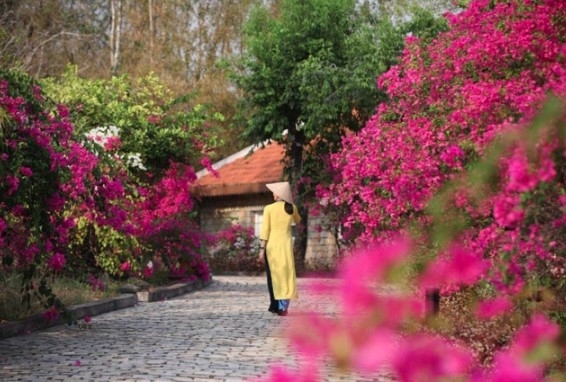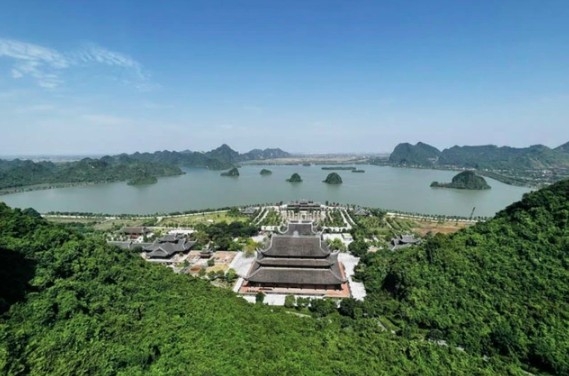Booking.com names five top destinations in Vietnam for sustainable travel
VOV.VN - Chau Doc, Ha Tinh, Phu Ly, Tam Ky, and Con Dao have been highlighted in Booking.com’s 2025 Sustainable Travel Report as standout examples of local destinations embracing responsible tourism.
These destinations have been selected based on the highest percentage of properties with independent third-party sustainability certifications in Vietnam on Booking.com.
Chau Doc city in Mekong Delta An Giang province

Booking.com shared that life in Chau Doc flows with the Hau River, through stilt houses, colourful floating markets, and a deep-rooted spiritual identity that centres around sacred sites like Nui Sam Mountain and the revered Ba Chua Xu Temple.
“On the islets of Chau Phong and Chau Giang, Cham communities preserve centuries-old weaving practices. Eco-conscious travelers can glide through Tra Su Cajuput Forest, a protected haven just outside the city with a lush wetland ecosystem of duckweed, cajeput trees, and lotus blooms,” it noted.
Central Ha Tinh province

According to the website, nature and culture go hand in hand, shaping a destination where sustainability is deeply rooted in every experience.
From the serene shores of Thien Cam Beach to the emerald forests of Vu Quang National Park, a designated ASEAN Heritage Park, this area is a place where rich traditions and natural beauty anchor a rising model of sustainable travel through rural revitalisation, community-based homestays, and conservation-focused travel experiences.
It stressed that travelers can immerse themselves in a province where local life and nature move as one whether wandering through villages adorned with flower-lined lanes, exploring traditional handicraft practices, or visiting historical landmarks like the Nguyen Du Memorial Site.
Phu Ly city in northern Ha Nam province

Booking.com revealed that Phu Ly is now a thriving urban hub that has managed to preserve the charm of its historical roots. From the poetic lanes of Chau Cau to the tranquil Chua Bau complex and heritage streets, the city offers a rare harmony between tradition and modern urban life.
“Phu Ly has taken active steps to preserve its rich legacy while promoting sustainable tourism by integrating heritage conservation into urban development and supporting local artisans and generational craft shops,” it said.
It noted that Phu Ly also connects travelers to nearby temples, festivals, and traditional craft villages like Doi Tam (drum-making) and Nha Xa (silk weaving), all part of a growing tourism model that values preservation as the foundation of growth.
Song Cau Town in southern central coastal Phu Yen province

Tucked between the vibrant cities of Quy Nhon and Tuy Hoa, according to the website, this tranquil fishing town situated on Vietnam's central coast quietly invites travelers to slow down and connect deeply with local life through its unspoiled nature and rich traditions.
“Sustainability is a way of life here, shaped by generations of local communities. From aquaculture reform to promoting low-impact tourism rooted in heritage, Song Cau always stands out as a destination where sustainability is lived, not just promised,” it added.
Booking.com also suggested that travelers take time to experience a day in the life of coastal communities with activities like paddling on traditional woven basket boats, learning the age-old craft of weaving fishing traps, or sampling the famous coconut rice paper handmade in village homes.
Tam Ky City in central Quang Nam province

Known for its colourful Tam Thanh Mural Village and the deeply moving Mother Thu Monument, Tam Ky is a charming city that blends history, culture, and natural beauty into a rising sustainable travel destination, where vast reed fields, pink lotus blooms, and traditional fishing techniques paint a poetic picture of daily life.
“The city has been actively promoting green tourism with initiatives like eco-friendly boat tours, community-run homestays, and seasonal cultural festivals such as the annual blooming Sua Flower Festival in Huong Tra Village for travelers to experience a slower, more meaningful connection to the land and its people,” the website concluded.



